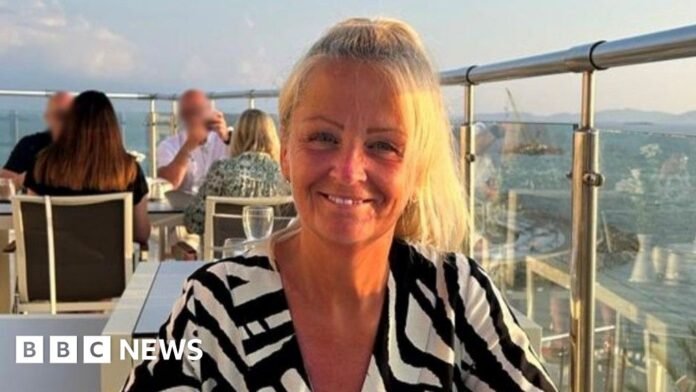BBC News, Suffolk
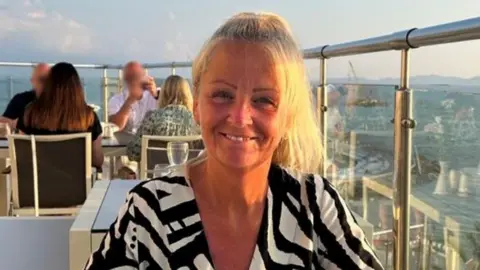 Suffolk Police
Suffolk PoliceAn investigation into the murder of a mother of six was one of the biggest ever undertaken by one police force – but why did it take a chance sighting by an officer to bring her killer to justice?
Anita Rose, 57, from Brantham, Suffolk, was walking her dog Bruce on the morning of 24 July last year when she was attacked. She died three days later.
It would be three months before her killer Roy Barclay – a violent offender and one of the county’s most wanted criminals, who had been on the run for over two years – was arrested and charged with her murder, despite having been living rough close the scene.
On Wednesday he was jailed for life and told he would serve a minimum of 25 years.
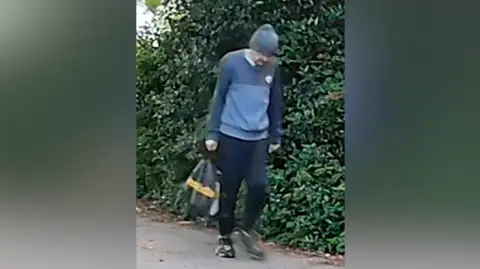 Suffolk Police
Suffolk PoliceMs Rose’s murder shocked the local community but police appeared to be drawing a blank in the search for her killer.
They maintained a heavy police presence around the village, undertaking searches and door-to-door inquiries.
Various appeals for information were published and police spoke to more than 3,000 people in the area.
Six weeks after the murder, police published CCTV pictures of two men they hoped to speak to.
One of these men remained unidentified and the weeks rolled on until a crucial sighting.
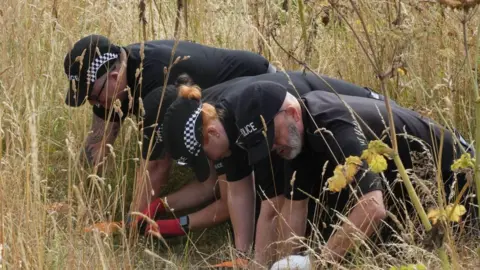 John Fairhall/BBC
John Fairhall/BBCDet Con Barry Simpson had been working on the investigation and was driving on the A137 near White Bridge, between Brantham and Manningtree on the Suffolk-Essex border, on 15 October.
By chance, he spotted a man, recognising him as the unidentified individual from the CCTV appeal.
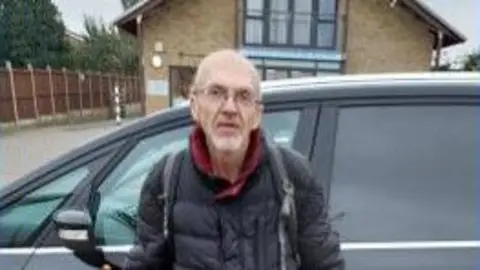 Suffolk Police
Suffolk PoliceGiving evidence at Barclay’s trial, he said he filmed the man and took his photograph before speaking to him.
The man gave a false name of John Lesley, but provided his actual date of birth and a mobile phone number, so the force was able to ascertain his real identity as Barclay.
On 21 October, almost three months on from Ms Rose’s death, he was arrested at Ipswich County Library and subsequently charged with her murder, which he denied.
Barclay’s trial heard he had been jailed in 2015 for the violent, unprovoked assault of an elderly man in Walton-on-the-Naze, Essex, and released on parole in 2020.
His probation address had been listed in Ipswich, but when he breached the terms of his licence by making himself homeless in 2022, he was wanted by police.
 Suffolk Police
Suffolk PoliceOfficers came to learn he had been living in carefully hidden camps, including one in Brantham, about a mile from where Ms Rose was attacked, as well as under the Orwell Bridge in Ipswich.
Both camps were concealed in undergrowth and shrubbery and he had also taken to shaving his head to change his appearance and evade police.
Bizarrely, while on the run, Barclay was also posting hundreds of pictures and reviews on Google.

Det Ch Insp Matthew Connick, senior investigating officer in the case, initially said officers had “little clue or indication” as to why Ms Rose was attacked, and that they had started with a “blank canvas”.
He said teams hunted for suspects in the Brantham and Manningtree area, but Barclay did not appear on their lists because he had links only to Ipswich.
“Ipswich is 11 miles away and obviously when you go into Ipswich your datasets become much larger,” he explained.
“So we didn’t know about Roy Barclay’s links in Brantham until we arrested him and reviewed his phone downloads.”
Asked now whether he thought it was a mistake not to look at Ipswich and other areas, he said: “I don’t think so because it was such a large investigation that you’ve got so much data that you’re working on: all various forms of forensics, the house-to-house [inquiries], CCTV.”
Det Ch Insp Connick said he did not believe the force would have found Barclay sooner than it did and that teams “progressed everything as expeditiously as possible”.
 Suffolk Police
Suffolk PoliceHe said the sighting of Barclay near White Bridge had been a “big breakthrough” but that no-one was aware of Barclay’s Brantham camp.
This was due to the original search area being focussed on the sewage works close to where Ms Rose was found unconscious, and the walking route she had taken on the morning she was attacked.
“The camp was found in February, much later on, but followed a path that was really isolated along the railway track, over the railway bridge and then further out of Brantham,” he said.
“It’s just an area…. [it was] really dense undergrowth and nobody knew that that was there.”
He added that the force had “so many main lines of inquiries” and it “wouldn’t have been feasible to search the whole of Brantham and the whole of the countryside”.
 Suffolk Police
Suffolk Police“There wasn’t anybody telling us about potential people camping rough in any of those areas,” Det Ch Insp Connick continued.
Ms Rose’s missing earbuds were found with Barclay’s DNA on them at the Orwell Bridge camp, along with the sweatshirt he had been wearing on the CCTV image.
At the Brantham camp, her missing pink jacket and phone case were found, along with her door key.
Barclay’s phone records also suggested he had been washing at the sewage works while camped at Brantham.
Det Ch Insp Connick said the force referred itself to the Independent Office for Police Conduct (IOPC) when it realised Barclay had been wanted on recall to prison when he attacked Ms Rose.
The IOPC determined it was not for it to investigate and the review was handed back to the force.
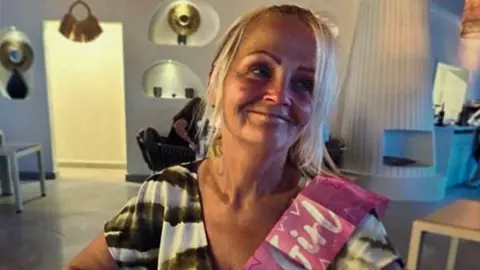 Crimewatch Live
Crimewatch LiveSince then, the force has voluntarily agreed to a Multi-Agency Public Protection Arrangements (MAPPA) review alongside the Probation Service, which would review everything related to Barclay.
Det Ch Insp Connick said it had done this for future safety and because there were “unanswered questions for the family”
He said due to the review, he was unable to answer questions on whether the force did everything it reasonably could and what lessons had been learnt.
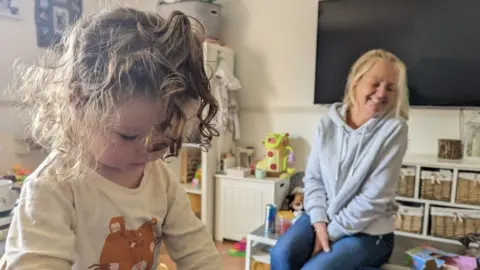 Family photo
Family photoAfter Barclay’s sentencing, Ms Rose’s son Ashley Rose paid tribute to her.
“She was not just a dog walker. She was Anita Rose, my amazing mum and children’s grandma,” he said.
“We don’t want her to be remembered as the ‘murdered dog walker in Brantham’.
“She was an amazing, generous, kind and caring woman. No amount of sentencing time will justify what happened but we will forever cherish the time we had with her.”



